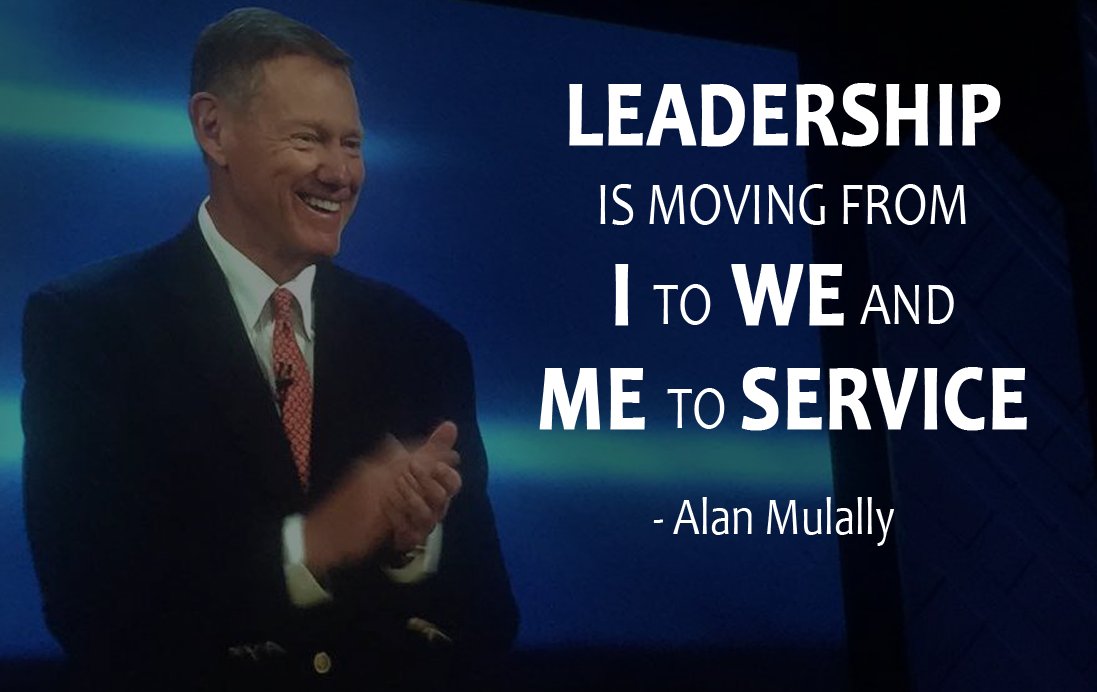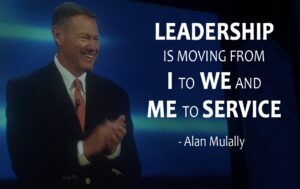
09 Feb Alan Mullaly : Leadership Traits, Behaviors and Styles

The importance of an appropriate leadership style and methods has been discussed by the media and professionals for more than several decades now. Nevertheless, leadership was not regarded as a driving force of an organization until the 21st century. As mega-corporations such as Google, Apple, and Microsoft expand, the organizational behavior and leadership styles appropriate for such corporations also change, adapting to the needs of the market, economy, and the company itself. One of the prominent examples of a successful leadership style is Alan Mulally’s turnaround of the Ford Motor Company. When Mulally had become the CEO of the FMC, he managed to save the company from complete bankruptcy and bring the biggest revenues that the corporation had in the last ten years (Emmons, 2015). To understand how it was done, it is necessary to evaluate Mulally’s personality and approach to organizational leadership.
Alan Mullaly Personality and Leadership Traits
It is possible to assume that one has to be active, intelligent, creative, and optimistic to save a mega-corporation from bankruptcy. As Bunkley (2016) states in the article about Mullaly, he was extremely “energetic”, but, at the same time, the decisions that he made were reflected upon and thoroughly examined (para. 12). What is more, the CEO of the company held himself responsible for its success and therefore engaged in the promotion of products, conversations with customers, and closing sales (Bunkley, 2016). It would not be right to call Mulally a risky person; nevertheless, he had to make some risky decisions to help the company avoid bankruptcy.
Leadership traits Mulally possessed – communication, commitment, drive, positive attitude, integrity, and decisiveness – helped him bring the company to success. His drive and communication helped him to understand employees’ needs and form the company’s vision, while his intelligence, decisiveness, and positive attitude were used to avoid any movements that would be too risky, remembering the economic crisis during which Ford had to fight with the upcoming bankruptcy.
Alan Mulally Behaviors
Task-oriented and people-oriented (or relationship-oriented) leader behaviors are the main categories that can be used when assessing the organizational behavior of a leader. Task-oriented leadership focuses on maintaining an approach that presents employees with a series of tasks they need to solve. Task-oriented leaders are more interested in finding solutions and resolving problems than promoting companies’ vision to employees and establishing connections between them and the leader (Motschnig and Ryback, 2016). Relationship-oriented leadership that is also called emotional intelligence has become more popular in recent years as CEOs of different companies had noticed that teamwork and dedication brought more efficiency into the organizational working process. That is the reason why multinational corporations prefer engaging in relationship-oriented leadership rather than task-oriented ones.
As Mulally noticed, the problem that the previous CEO of the Ford Company failed to approach was the company’s focus on internal issues and battles. Instead, he should have fostered teamwork and understanding among all employees of the FMC (Bunkley, 2016). Thus, Mulally has become a coach for Ford’s employees, always addressing those problems that needed to be solved and never focusing on his personality (Bunkley, 2016). He became a facilitator between business teams and business decisions, presenting his plan to the FMC executive team and stressing that specific rules needed to be followed by all members of the team (Emmons, 2015). Together with the famous concept “One Ford”, Mulally also presented “One Team”, an approach that saw the team as “people working together as a lean, global enterprise” (Emmons, 2015, p. 48). Therefore, Mulally regarded teamwork and employees’ devotion as essential for the well-being of the company. His approach was entirely people-oriented.
Alan Mulally Leadership Style
When assessing a leadership style, three types of leadership styles are commonly used to refer to the specifics of it: autocratic style, participative/democratic style, and laissez-faire/free-rein style. Autocratic style can be characterized as a controlling, strict approach to followers who need to show dependence and respect. The relationships between the head of the company and employees are usually hierarchical (Gupta and Wart, 2015). The autocratic leader stays detached from employees; however, when the leader leaves, the productivity of the company also drops off (Stout and Rostron, 2014). Participative leaders are closer to their employees: they take part in the group process, discuss solutions, and accept suggestions from employees (Stout-Rostron, 2014). Their role is to encourage and motivate workers, as well as be attentive to their needs. However, the last decision on a project is generally made by the leader and not by employees.
A leader that prefers free-rein style, also known as laissez-faire style, does not provide teams with strict guidance; moreover, often he or she does not give any advice and directions at all. When this method is implemented, employees are free to decide which solution is the best one and needs to be chosen (Stout and Rostron, 2014). This approach is common for groups where participants are highly qualified and can offer professional decisions. However, the main disadvantage of this style is that employees might not be motivated enough to provide quality work.
The leadership style that Mulally had chosen is, of course, participative or democratic. He discussed the decisions he was about to make with his team, participated in sales and other events of the company, contacted customers during sales, encouraged the executive team to work on the brand and its image together (Emmons, 2015). Moreover, Mulally also stressed that changing the attitude of the executives would not bring the desired improvements, as employees at all levels also needed to understand the aims of the company and feel dedicated to it (Nisen, 2013). Referring to his leadership style, Mulally stated: “It [was] an honor to serve” (Nisen, 2013, para. 5).
It was important for him to show that everyone was included, and each employee had affected the organization’s movement from bankruptcy to success. Mulally also criticized the autocratic style (although not directly). According to him, managers should ask how they can help rather than punish employees for mistakes or inefficient working processes (Nisen, 2013, para. 7). Knowledge sharing is also a significant factor that helps maintain organizational health, resulting in better outcomes and increased productivity of the company (Emmons, 2015). Mulally is not the first leader who noticed the positive effect of the democratic style, as it has been used for more than five decades now. However, the uniqueness of his method is that he combined different ideas, encouraged teamwork and collaboration, participated in the company’s events, was a couch to his employees, listened to suggestions, and provided his own solutions. Thus, Mulally viewed his position not as a source of power over people and the company, but as an opportunity to serve and find answers to challenging questions.
References
Stout-Rostron, S. (2014). Leadership coaching for results: Cutting-edge practices for coach and client. Johannesburg, South Africa: Knowledge Resources Publishing.
Bunkley, N. (2016). Mulally’s fast track to fame.
Emmons, C. (2015). Regaining organizational health and vitality: Ford Motor Company’s positive adaption to the challenges of the automotive industry crisis. People and Strategy, 38(1), 46-51.
Gupta, V., and Van Wart, M. (2015). Leadership across the globe. London, UK: Routledge.
Motschnig, R., and Ryback, D. (2016). Transforming communication in leadership and teamwork: Person-centered innovations. Berlin, Germany: Springer.
Nisen, M. (2013). Alan Mulally explains how he turned around Ford.
